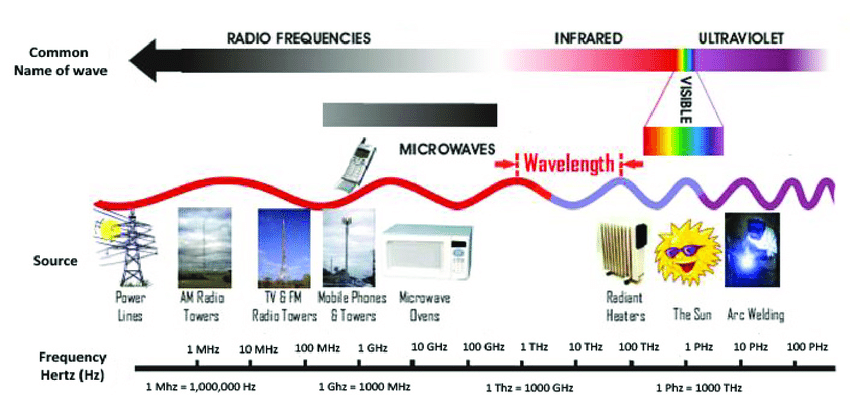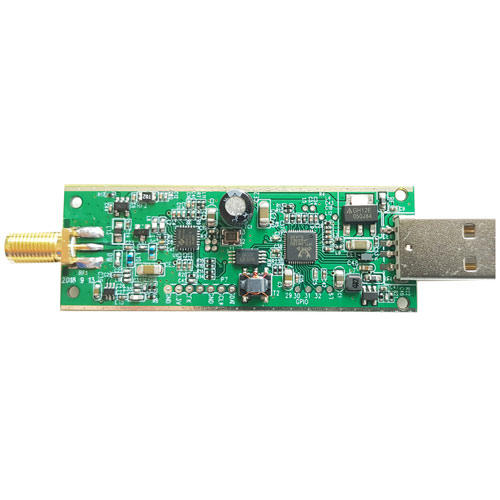“The total amount of energy from outside the solar system ever received by all the radio telescopes on the planet Earth is less than the energy of a single snowflake striking the ground.”
Carl Sagan
You might be wondering, what is RTL-SDR?
Software-defined radio (SDR) is a radio communication system where components that have been traditionally implemented in hardware (e.g. mixers, filters, amplifiers, modulators/demodulators, detectors, etc.) are instead implemented by means of software on a personal computer, or another computer device (could be a Raspberry PI or a dedicated system). When Receivers were first built, the electronics inside each had a purpose, one part might amplify the signal, another part might tune the signal, while yet another part might convert the signal to sound waves so we could hear it. Now that can be done through computer processing.
RTL-SDR (RealTek) is a low-cost USB device that can be used as a computer-based radio for receiving live radio signals. Depending on the RTL-SDR it could receive frequencies from 500 kHz up to 1.75 GHz. Most of the software for the RTL-SDR is also community developed, open-source and most of the time free of charge.


RTL-SDR got its start from DVB-T-TV tuners that were made with the RTL2832U chipset. With the skill and experimentation of Antti Palosaari, Eric Fry, and Osmocom, they discovered that the raw I/Q data in the RTL2832U could be accessed and then converted with a custom software driver developed by Steve Markgraf. It was kind of like finding that that old Zune MP3 player could suddenly run Excel and Microsoft Word (kind of).
The RTL-SDR is a very versatile piece of hardware, capable of receiving and transmitting a wide variety of signals. It is capable of receiving FM, AM, SSB, and digital TV (DVB-T, DVB-T2, DVB-C, and ISDB-T) signals, as well as GSM, UMTS, and LTE signals. Additionally, it can be used for software-defined radio (SDR) applications, such as decoding radio transmissions from aircraft, ships, satellites, and other sources. The RTL-SDR is a great choice for those looking to get into the world of software-defined radio. With its low cost and versatility, it is an ideal choice for hobbyists, students, and professionals alike. It is also an excellent choice for those looking to do research in radio frequency (RF) technology.
Since its discovery, it has become very popular and offers the user a wide swath of the radio spectrum. So with just a small investment, you can start pulling in all sorts of radio signals that just a few years ago would have cost hundreds or thousands of dollars. A word of warning, unfortunately, we live in a world of mass production, and with that come the scammers. Look out for ‘knock-off’ RTL-SDRs, they are out there, and they are plentiful, and often look very close to the originals, even duplicating the writing on the cases. I am not saying the knockoffs would not work, but let the buyer beware, and you get what you pay for…
Here is a list of manufacturers/vendors for RTL-SDR components that I have used. And by no means is this all of them, there are many, many types of software and hardware out there! Much of it is for very specialized uses, like decoding a pager signal, or processing imagery from satellites.
HARDWARE
RTL-SDR Blog Maker of the RTL-SDR V3 dongle.
Nooelec Maker of many types of SDR’s and up converters, LNA’s, Sawbirds, etc
Airspy Maker of SDR receivers developed to achieve igh performance using innovative combinations of DSP and RF techniques.
SDRplay Makers of the RSP Series SDR’s
SOFTWARE
Airspy SDR# The developer of the software called SDR# (SDR Sharp) the go-to standard in Software Defined Radio software for multiple platforms, and my go to software.
HDSDR is a freeware Software Defined Radio (SDR) program for Microsoft Windows 2000/XP/Vista/7/8/8.1/10.
SDR-Radio.com is a Windows solution for Software Defined Radio (SDR) receivers and transceivers. Designed for the commercial, government, amateur radio and short-wave listener communities, this software provides a powerful interface for all SDR users.
SDRuno Made by SDRPlay
Stuff you can do in the VHF/UHF range
There is a lot of stuff you can do in the VHF / UHF range, some of these are illegal in some countries so please check your local laws prior to listening in on these broadcasts…
- Listen to your favorite FM radio stations.
- Find stuff being broadcast on other frequencies such as police, marine, search and rescue, and other radios.
- Listen to local Air Traffic Control
- Find digital data streams that you may or may not be able to decode. (lots of software out there for that.
- Recieve and demodulate and decode Satellite Imagery See my NOAA Weather system HERE
- Decode ADS-B and plot commercial aircraft in your local area on a map. See mine HERE
Don’t yet have an SDR but want to try it out? Many folks have ‘hooked up’ their SDR’s to the internet, thus allowing anyone, anywhere in the world, with an internet connection to listen in!
A WebSDR is a Software-Defined Radio receiver connected to the internet, allowing many listeners to listen and tune it simultaneously. SDR technology makes it possible that all listeners tune independently, and thus listen to different signals; this is in contrast to the many classical receivers that are already available via the internet.
Here’s a list of many of them http://www.websdr.org/
Just pick a station and “tune-in”